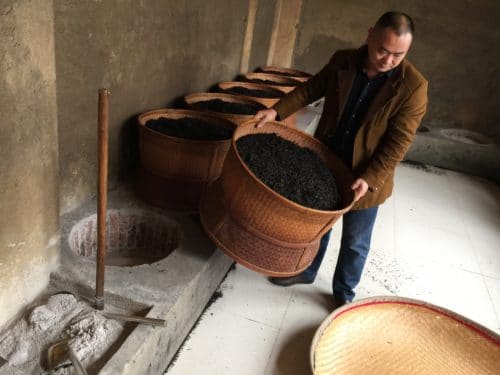Processing as a Standard For Specialty Tea
This post is part of a continuing series of writings by Seven Cups founder, Austin Hodge, for the International Specialty Tea Association. The aim of this series is to detail twelve elements that can be used to authenticate and value specialty tea. The previous post on the tea master as a critical component of quality tea can be found here.

Element 8 — Processing
Along with recognizing the tea maker as a person who is important in the valuation of a tea due to his or her skilled decisions in the tea’s manufacture, it reasonable that those decisions should be identified as well. This brings us to the element of processing.
In looking at the disclosures around processing, it’s unreasonable to think that tea makers should state all of their own techniques that make their teas special. However, there is basic information that is pertinent.
For example: What steps of the tea making were performed with machinery and what kind of machines? Simple or complex? This question isn’t saying that machinery in the hands of a good operator can’t competently equal the result of hand roller. A simple rolling table can yield very good results, yielding leaves properly rolled and unbroken, while an unskilled hand roller can have terrible results. Nevertheless, the investment of effort in handmade tea still merits recognition, as does the potential for a handmade tea’s flavor to depart from that which is created by the exactitude of modern machinery.
Moreover, distinctions like charcoal roasting versus oven roasting in wulong have very noticeable impacts of flavor. Yellow tea that has undergone an 8 hour menhuang is expectedly different from one that has been made with just 2 hours of that process. Disclosure of this information gives reasonable expectations of what a tea will taste and smell like and recognizes the difficulty of the work invested in making the tea. This information is, again, foundational in a tea’s proper valuation.
Equipment changes over time too. The traditional frying that happened in a fire heated pan left leaves scorched or “blistered”, which gave a distinctive taste. Electric pans did away with blistered leaves, but also changed the taste. Electric roasting may prove to be better than charcoal, but it is besides the point. The pertinent issue is the disclosure of the variable in question. Wuyishan wulongs that are processed all night benefited greatly from having electric lights, but how great was the tea maker that equalled that feat in the semi darkness? We are not advocating hand making necessarily, but the difference should be known.
There is still plenty of room for trade secrets and unmatched skill to distinguish a tea and leave the question, how did she or he do that? Disclosing the basics does not take away from the specialness and mystery of a well made tea.
